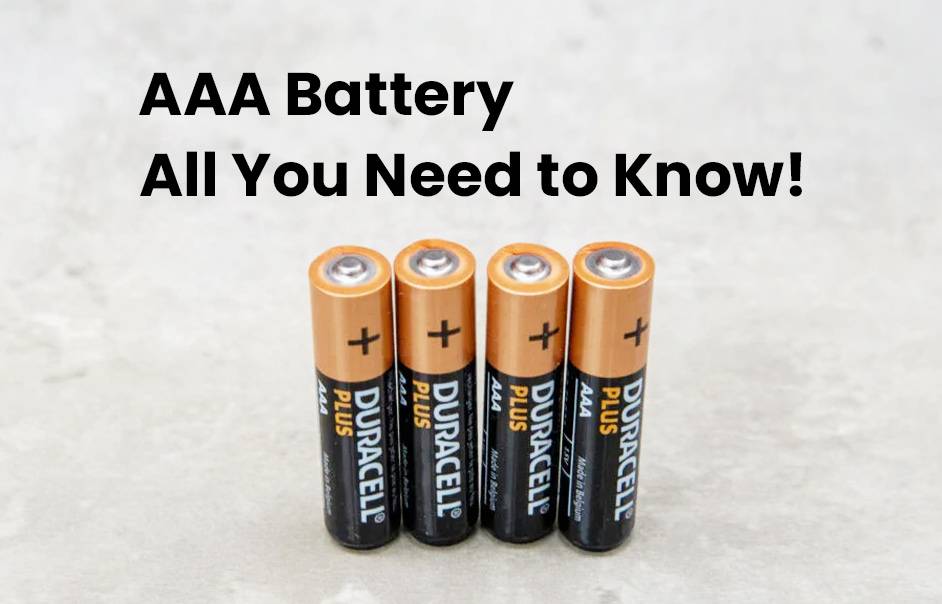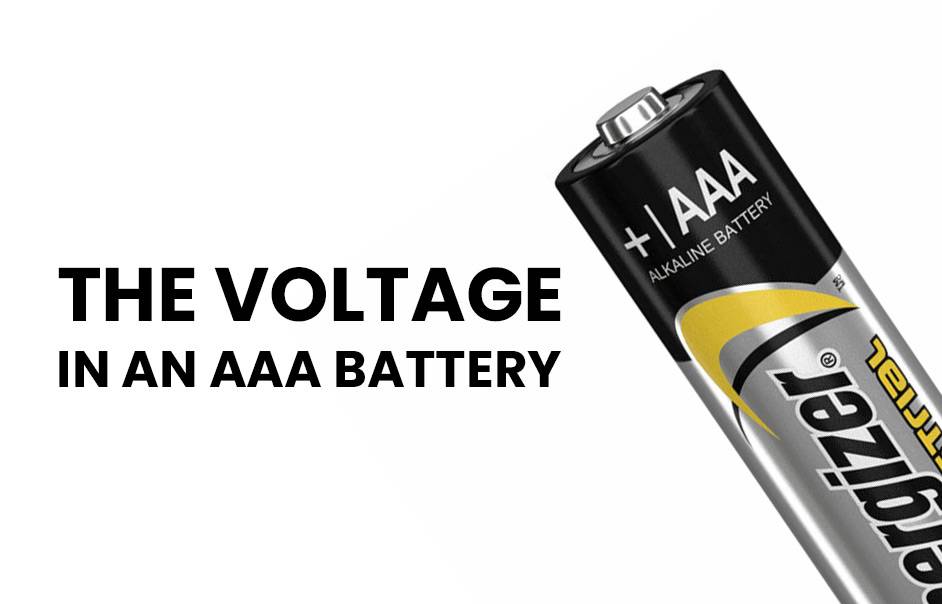- Forklift Lithium Battery
- Golf Cart Lithium Battery
- Rack-mounted Lithium Battery
51.2V 100Ah Rackmount LiFePO4 Battery
8000 times (80% DOD 0.5C)
Optional SNMP for TELECOM - Car Starter Battery
- 12V LiFePO4 Battery
12V 150Ah Lithium RV Battery
Bluetooth App | Self-heating
LiFePO4 | Group 31
UL 1642 | IEC 62619 - 24V LiFePO4 Battery
- 36V LiFePO4 Battery
- 48V LiFePO4 Battery
- 60V LiFePO4 Battery
60V 100Ah Lithium Battery (AGV, AMR, LGV)
Peak Discharge Current 400A
500 x 298 x 349 mm - 72V~96V LiFePO4 Battery
72V 100Ah Lithium Golf Cart Battery
Peak Discharge Current 315A (10S)
740 × 320 × 246 mm - Wall-mounted Lithium Battery
51.2V 100Ah 5kWh
Wall-mounted Battery532 x 425 x 170 mm / LiFePO4
>8000 Cycles (80% DOD 0.5C)
RS485 / CAN-bus
for Solar Home ESS - Home-ESS All-in-One
51.2V 32kWh
All-in-On HESS SystemPowerAll
51.2V / LiFePO4
>8000 Cycles (80% DOD 0.5C)
RS485 / CAN-bus / WiFi
All-in-One for Home ESS
AAA battery, All You Need to Know

What is an AAA battery? It is a small cylindrical battery used widely in portable electronics, typically offering 1.5 volts for alkaline and lithium types, with capacities varying by chemistry. How long do AAA batteries last? Lifespan depends on usage and battery chemistry, with lithium AAA batteries lasting longer than alkaline types. Redway Power’s lithium battery expertise highlights innovation in compact, reliable power sources.
What is an AAA battery and what devices use it?
An AAA battery, also known as triple-A, is a miniature cylindrical battery commonly found in remote controls, digital cameras, flashlights, toys, and small electronic devices. Measuring approximately 44.5mm in length and 10.5mm in diameter, it is designed for moderate-power consumption devices where lightweight and compact size are essential.
What are the common types and chemistries of AAA batteries?
AAA batteries come in several chemistries: alkaline, lithium, nickel-metal hydride (NiMH), and carbon zinc. Alkaline is the most common disposable type, offering about 1200mAh capacity. Lithium AAA batteries provide higher energy density, longer shelf life, and better performance at extreme temperatures. Rechargeable NiMH AAA batteries typically supply 1.2 volts with moderate capacity but can be recharged multiple times.
How do AAA battery voltage and capacity vary by chemistry?
Alkaline AAA batteries provide a nominal voltage of 1.5V and around 1200mAh capacity, while lithium AAA batteries also offer 1.5V but with a higher capacity and longer lifespan. NiMH rechargeable AAA batteries supply about 1.2V with capacities ranging from 600 to 1000mAh. Higher voltage and capacity translate to longer device run times.
What sizes and standards define AAA batteries globally?
AAA batteries are standardized by IEC as LR03, ANSI C18.1 as 24A, and JIS as UM-4. Despite slight packaging and performance variants, all conform to a consistent size of approximately 44.5mm length and 10.5mm diameter, making them interchangeable in devices designed for AAA cells worldwide.
How do alkaline and lithium AAA batteries compare in performance and cost?
Alkaline batteries are cost-effective and readily available but have limited capacity and shelf life. Lithium AAA batteries, although more expensive, provide significantly longer life, better cold weather operation, and lighter weight. For high-drain or critical-use devices, lithium AAA batteries are the superior choice.
How do rechargeable AAA batteries function and how long do they last?
NiMH AAA rechargeable batteries can be cycled up to 500-1000 times, offering sustainable power and reducing waste. Their slightly lower voltage makes them suitable for most devices, although some sensitive electronics may require alkaline replacements. Recharging saves cost over time despite higher upfront expenses.
What are best practices for storing and disposing of AAA batteries?
Store AAA batteries in a cool, dry place away from metal objects to prevent short circuits. Dispose of spent batteries responsibly according to local hazardous waste regulations. Recycling programs safely recover metals and reduce environmental impact, a principle upheld by Redway Power’s eco-conscious battery production.
How do Redway Power’s lithium AAA batteries reflect technological advancements?
Redway Power integrates advanced lithium chemistry, ISO 9001:2015 manufacturing standards, and MES quality control in producing lithium AAA batteries known for high energy density and consistent output. These batteries exemplify cutting-edge industry trends toward reliable, environmentally friendlier power sources in compact formats.
AAA Battery Technical Specifications Chart
| Chemistry | Nominal Voltage | Typical Capacity (mAh) | Rechargeable | Shelf Life (Years) | Weight (g) |
|---|---|---|---|---|---|
| Alkaline | 1.5V | ~1200 | No | 5-7 | 11.5 |
| Lithium | 1.5V | 1000+ | No | 10-15 | 7.6 |
| Nickel-Metal Hydride | 1.2V | 600-1000 | Yes | 3-5 | 14-15 |
| Carbon Zinc | 1.5V | ~600 | No | 2-3 | 11.5 |
Redway Power Expert Views
“AAA batteries, though small, embody significant technical complexity and versatility. At Redway Power, our lithium AAA technology pushes boundaries in energy density and consistency, driven by meticulous ISO and MES production quality standards. Such innovation ensures compact batteries deliver dependable power in the most demanding portable applications.” — Redway Power Battery Engineer
Conclusion
The AAA battery remains a foundational power cell for countless devices, offered in various chemistries tailored to user needs. Alkaline suits everyday use, lithium excels in high performance and longevity, while NiMH rechargeables enable sustainability. Redway Power’s commitment to advanced lithium AAA battery production positions it at the forefront of modern battery technology for compact power solutions.
FAQs
What voltage do AAA batteries provide?
Typical nominal voltage is 1.5V for alkaline and lithium, 1.2V for NiMH rechargeable.
Are lithium AAA batteries better than alkaline?
Yes, lithium AAA batteries last longer, perform better in cold, and weigh less.
Can AAA batteries be recharged?
Rechargeable AAA batteries use NiMH chemistry and can be recharged hundreds of times.
How long do AAA batteries typically last?
Alkaline AAA can last 5-7 years shelf life; lithium up to 10-15 years; NiMH 3-5 years.
How does Redway Power ensure AAA battery quality?
Through ISO 9001:2015-certified manufacturing and MES traceability delivering reliable, consistent power.

















